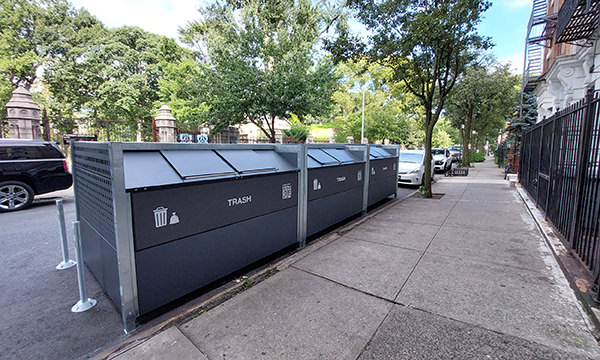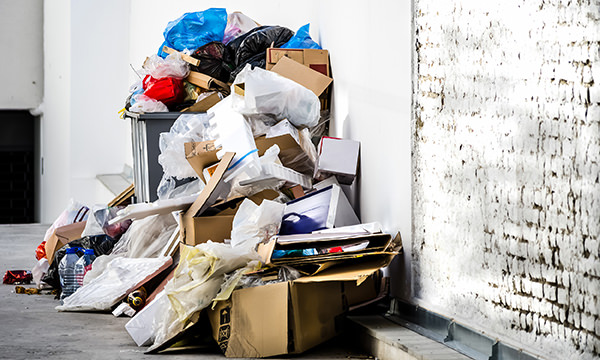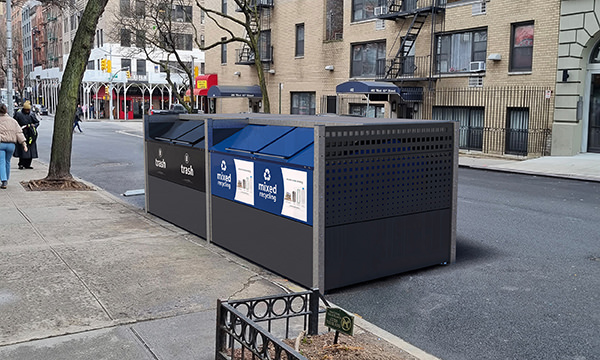

5 Steps to Improve Recycling in Multi-family Residential Settings
In the context of waste management, diverting materials from disposal has significant environmental benefits over landfilling. While the reuse or repurposing of materials exists in varying initiatives across the U.S, recycling is currently the most widely used method for achieving waste diversion.
For recycling to be successful at both individual and organizational level, it shouldn’t feel difficult to participate in. Multi-family residential settings, however, with their diverse populations and often contrasting attitudes toward waste management, make ensuring good recycling practice uniquely challenging. If there exists a lack of convenient access to recycling and an insufficient capacity for the storage of materials awaiting collection, this will prevent the capture of clean recyclables.
Encouraging positive behavior and participation means promoting opportunities to easily engage in recycling and implement good practice as a daily habit. To help improve recycling in multi-family residential settings, metroSTOR has selected 5 simple steps for landlords and building managers to achieve success with recycling from the point of generation, through to collection.
Waste audits are a highly effective resource to help attain a clear understanding of a building’s waste stream, helping to quantify the amount of recyclable waste produced by residents within a given timeframe.
This can provide crucial data to help to inform priority areas of focus, and the level of costs involved for implementing a recycling system, as well as the capacity requirements to accommodate all residents. These findings can then be utilized to provide further insight and help find the most effective solutions.
Providing awareness and communicating with residents is a primary action to take in order to improve recycling rates. According to a 2021 survey, while 95% of Americans say they consistently engage in recycling, fewer than half know the basics. This statistics suggests that one of the shortcomings of effective recycling comes from a lack of awareness.
To achieve this, consider implementing and promoting an easily accessible recycling programme for all residents. This can be done virtually; through an app or through email, through word of mouth, or through dedicated signage. The main goal here is to help residents understand the benefits of the programme, provide simple instructions on how they can meet the specific requirements of the programme, and promote a sense of shared community goals.
By installing easily accessible and identifiable recycling infrastructure that offers containerized storage of recyclable materials between collections, residents are afforded an easy route to engage in good recycling practice. This step is crucial to the successful uptake of any recycling initiative. A communal deposit point won’t encourage good practice if it exists in a difficult to access location where it is treated as more of an afterthought.
As in step 1, carrying out a waste audit helps to understand the capacity requirements for residents, and these are put into practice in order to provide enough volume and storage space between collections and encourage consistent, good recycling practices.

A lack of awareness of accepted materials is the biggest contributor to recycling contamination. If a recycling system is too complex for residents and challenging to consistently put into action, it will only instigate poor practice. This then increases the risk of contamination, and ultimately creates difficulties diverting materials from disposal.
Recycling contamination can be overcome by integrating easily understandable visual guidance, such as clear color coding of bins and iconography, as well as stream-specific aperture to help separate materials. This helps to restrict improper disposal of items, provide clarity over the specific recycling streams, and advise residents of the accepted materials.
The World Health Organization (WHO) considers e-waste to be the fastest growing waste-stream in the world. It is highly problematic when disposed of in regular waste streams, contributing to serious health and safety concerns for collection crews, as well as the loss of valuable finite resources.
Advising households of the dangers involved can be combined with establishing dedicated curbside drop-off points. Materials are then collected by a specialist service, helping to ensure safe and appropriate disposal. If residents are aware of access to a collection service on a given day, they are much more likely to recycle their e-waste safely.




